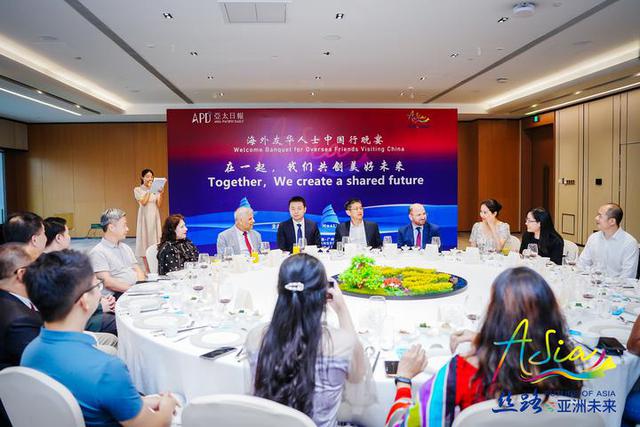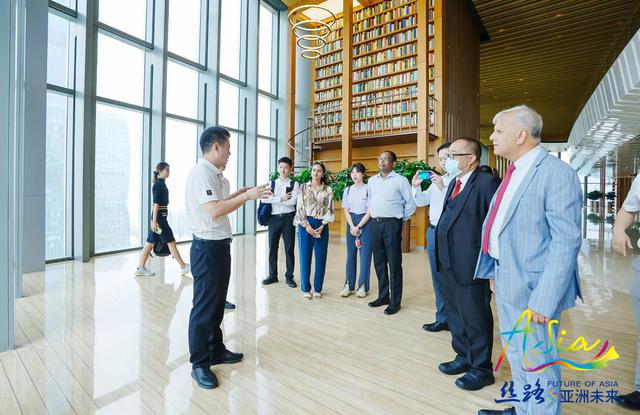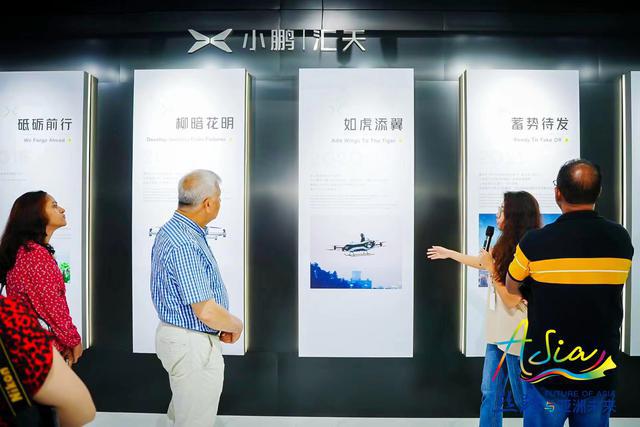
Shristi Kafle, Every summer has its own story. This summer arrived in all its enchanting glory when I got an opportunity to explore the vibrant and bustling city Guangzhou. In the second week of June, I was invited by Asia Pacific Daily (APD) to attend the exchange program, which turned out to be a fruitful and memorable trip in the post-covid-era.
The program brought together the scholars, experts and journalists from different South Asian and Southeast Asian countries including Nepal, Pakistan, Sri Lanka, Malaysia, Thailand and Myanmar, which is exclusive in itself and a great learning opportunity.

Together for A Shared Future
To create a community with a shared future, there is a need of unity and cooperation among the countries. As similar as the vision of the Chinese President, I found the similar gesture and feelings of the participating friends from other countries. It was impressive when the APD Chairman Andy Jin underscored the need of mutual assistance, common development, and everlasting friendship in Asia Pacific region, and APD being the bridge.

Pakistani former diplomat and Sinologist Prof. Zamir Ahmed Awan repeatedly saying, “China is our common friend in the region” which is reflected in development and economy of many countries.
It is true that under the Belt and Road Initiative, the distance between China and the world has become closer. The economic cooperation has tremendously increased with the partner countries, yielding greater results. At a time when the western narrative of debt-trap is on rise in South Asia, Sri Lankan trade expert Ajith D Perera shared how it has become important to fight such narratives by prioritizing real data and evidence, which is the need of an hour.
Friends from Malaysia and Thailand focused on the need to form a landscape for future cooperation for sustained growth of China and Asia relations, which is significant. The trip also helped to create a stronger people-to-people relations within the region as my new friend from Myanmar committed for frequent communication to strengthen our friendship.
The interaction with media students at the historic Jinan University and their queries and concerns on BRI and its implementation in my country reflected deep interest and attempt to understand China’s relations with its neighbor.
Wonders of Guangzhou
As soon as I landed in this vibrant city, I was amazed by the city’s modern development which contributed to its unique identity and appeal. On the very first day, when we entered the Tianhe Central Business District (CBD), I found it as the hub of South China’s trade and business with high-end industries complemented by science and technology. During a presentation, the data spoke of a lot about its significance.

Whoever visits this city, they will instantly impress by its long history as a key trading port and a hub for international business. The view of architectural marvel ‘Canton Tower’ from 94th floor and urbanization around is still fresh in my mind. The local travel in metro helped me witness modern infrastructure and a well-connected transport while an evening cruise in Pearl River compelled me to indulge in industrialized and economically prosperous city with impressive and colorful skylines.
The repeated visits of unique and bustling Beijing Lu with my old Chinese friends and experiencing local tea and food helped me understand the blend of culture and modernism. Cantonese cuisines including dim sum and other delicate flavors still mesmerize my taste buds, while the dozens of food pictures have heavily occupied my phone gallery.
It is striking how not just the main city center, but the neighboring districts in Guangdong, an integral part of the Greater Bay Area, are equally growing with industries of manufacturing, logistics, and trade. The visit to Nansha district proved this. This whole region offers immense opportunities not just for locals, but also for other countries like ours.
Innovative Automobile Industry
Guangzhou holds a leading position in China’s automobile industry. When we visited the Nansha automobile terminal in the port, I was astonished to learn about the scale of production and exports of cars from China to the world. With nearly 70,000 cars being maintained in the area, it was a rare sight for someone from Nepal, which is an import-dependent country. I could learn how China has been accelerating the transformation of the automobile industry.
The visit to GAC manufacturing unit and closely observing its new energy vehicles provided a new impetus of hope for the greener future. To see a car being manufactured and ready in 53 seconds was out-of-the-world scene.

GAC’s next generation innovation and development of intelligently connected vehicles have become an important carrier of emerging industries. There is a huge scope for Nepal to import such electric vehicles from China, or to initiate to establish similar manufacturing industries in Nepal for third country sale or international market.
The visit and learning about the innovation of flying car in Xpeng Aeroht was another surprise. X2, the first electric flying car model to get for the permit in China, could be a premium product in the future. When I observed the flying car, I constantly thought of Kathmandu’s traffic chaos and how flying cars could be a solution to urban traffic congestion in the world.
In overall, Guangzhou’s modern development offered a new hope for the neighboring and developing nations in Asia to grow and prosper together.










